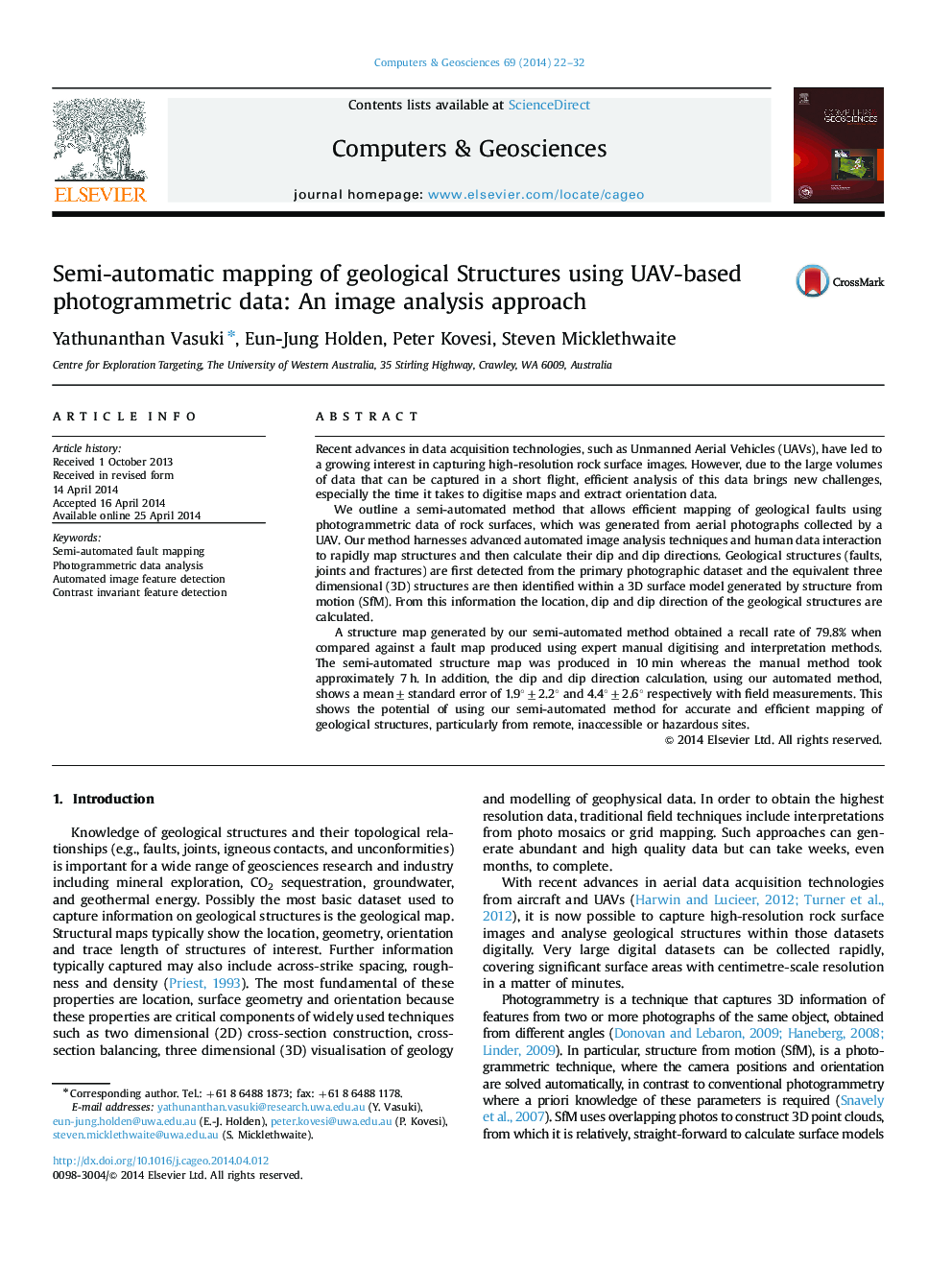| Article ID | Journal | Published Year | Pages | File Type |
|---|---|---|---|---|
| 507238 | Computers & Geosciences | 2014 | 11 Pages |
•A semi-automated structure mapping method using image processing techniques.•Geological structures are automatically mapped from data.•Dip and Dip direction are calculated from UAV-based photogrammetry data.•Automated processing results are validated using field measurements.
Recent advances in data acquisition technologies, such as Unmanned Aerial Vehicles (UAVs), have led to a growing interest in capturing high-resolution rock surface images. However, due to the large volumes of data that can be captured in a short flight, efficient analysis of this data brings new challenges, especially the time it takes to digitise maps and extract orientation data.We outline a semi-automated method that allows efficient mapping of geological faults using photogrammetric data of rock surfaces, which was generated from aerial photographs collected by a UAV. Our method harnesses advanced automated image analysis techniques and human data interaction to rapidly map structures and then calculate their dip and dip directions. Geological structures (faults, joints and fractures) are first detected from the primary photographic dataset and the equivalent three dimensional (3D) structures are then identified within a 3D surface model generated by structure from motion (SfM). From this information the location, dip and dip direction of the geological structures are calculated.A structure map generated by our semi-automated method obtained a recall rate of 79.8% when compared against a fault map produced using expert manual digitising and interpretation methods. The semi-automated structure map was produced in 10 min whereas the manual method took approximately 7 h. In addition, the dip and dip direction calculation, using our automated method, shows a mean±standard error of 1.9°±2.2° and 4.4°±2.6° respectively with field measurements. This shows the potential of using our semi-automated method for accurate and efficient mapping of geological structures, particularly from remote, inaccessible or hazardous sites.
